Are you ready for the AWP implementation in your organization?
If you are totally new to AWP or have no idea what we are talking about here, please make sure that you check our previous video blog post on the topic, the what and why of the Advanced Work Packaging (AWP).
Now let’s get started on AWP Implementation!
We again obtain the advice of Chris Carson, Enterprise Director of Program & Project Controls at Arcadis U.S., and our instructor at Project Control Academy. For example, how does an organization go about AWP implementation in their day-to-day process? Or maybe, how can someone become an AWP champion in their work community?
If I am being honest, I barely knew what AWP was when I started writing the AWP blog post series. Then out of the blue, a client engaged us to develop a tender work program for them. The Owner required the incorporation of AWP philosophies within the tender submission.
I saw this as a learning opportunity for my organization to slowly steer the ship around towards AWP implementation. If you’re wondering how it went, not to worry, I will fill you in at the end of this article.
But first, allow me to share something important with you. This exact AWP masterclass presented by Chris was what helped me take the first step confidently. Watching Chris’s presentation gave me the mental preparedness to attempt AWP implementation forour client. And I would love for you to experience the same!
Watch the AWP webinar recording below to see Chris’s recommendation for a step-by-step AWP implementation guide in your organization. Or if you would prefer, read our summary below with Chris’s points distilled into a super AWP implementation checklist! Happy learning!
AWP Implementation Checklist#1: CPM Scheduling Maturity
Does your organization practice CPM (Critical Path Method) in their projects?
If yes, then here is the good news: You are already one step forwards in your path towards AWP implementation.
Our first article on AWP Benefits discusses the importance of the Path of Construction. The Path of Construction is the sequence in which construction and commissioning activities will be executed on-site. Engineering and Procurement can then align their deliverables following the Path of Construction.
Sounds great! you say. You might then ask, who is responsible for dictating the Path of Construction?
Well, certainly not the Project Schedulers themselves. Instead, the entire project lifecycle team must collaborate to develop the Path of Construction. We can kickstart the development through an integrated planning session with all stakeholders in attendance.
As the name suggests, the Path of Construction requires the implicit use of CPM. This is where the Project Scheduler shines. They are in the best position to facilitate the integrated planning session due to their expert knowledge of CPM.
Chris Carson gives us two useful step-by-step examples below:
Long-Lead Time Equipment Example For AWP Implementation
Project delivery methods such as EPCC (Engineering, Procurement, Construction Commissioning) typically involve the procurement of long-lead time equipment.
In this example, Chris first gets the project team to identify the long-lead-time equipment to be delivered. He also requests the procurement team to provide the earliest delivery dates for each long-lead-time equipment.
Putting the two sets of information on a timescale, we end up with Fig. 1 below. Chris and his project team have identified 5 pieces of long-lead time equipment. In addition, they also have a general estimate of when each piece of equipment is available to be delivered.
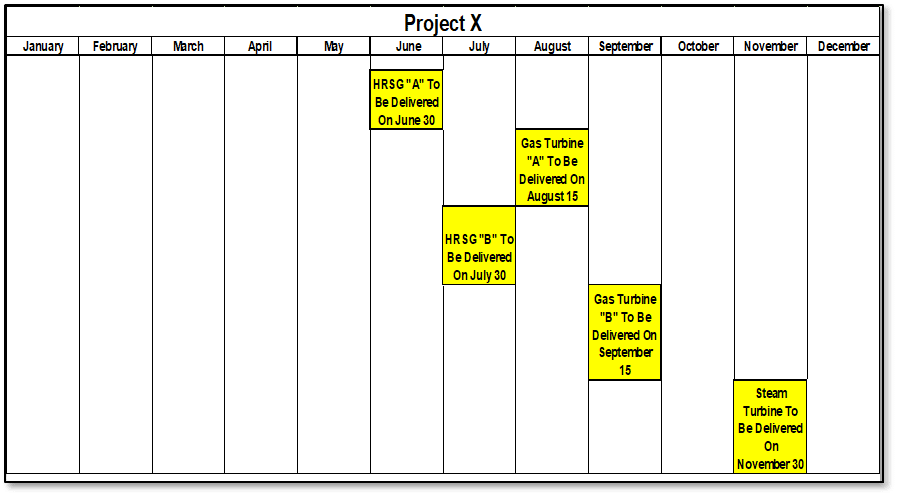
Figure 1: Identified Long-Lead Time Equipment With Required Delivery Dates On A Timeline
So far, so good?
Remember what we said about AWP being all about planning with the end in mind?
Here, each of the long-lead-time equipment represents an end. The project team now has the confidence to plan backward from a firm end date as agreed by all parties.
You may be wondering what planning backward means and how to go about it.
To illustrate the point, Chris uses the equipment Gas Turbine A as an example. In Fig. 2 below, Chris and his project team perform a backward pass from the Gas Turbine A delivery date of August 15th.
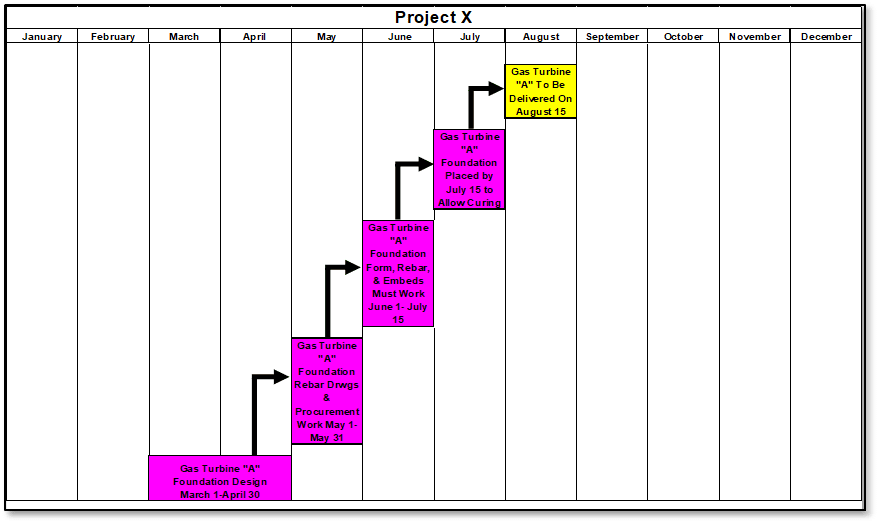
Figure 2: Performing A Backward Pass From A Long-Lead Time Equipment
There must be a foundation to support the Gas Turbine before its delivery on-site. Hence, the project team estimates the time taken to construct the foundation. This includes the curing time, formwork, rebar, and embedment works. The foundation works must start by June 1st if the concrete is to cure just before the gas turbine arrives.
We continue working backward from the construction phase to the procurement phase. The procurement team estimates 30 days to procure all materials to construct the foundation.
Consequently, the Engineering team must finalize the foundation design by April 30th at the latest. This concludes the path of construction for Gas Turbine A.
But the real magic happens when the latest allowed finished (LAFD) dates are known for all 5 equipment foundations. To know that, we perform the same backward pass for the remaining four long-lead-time equipment.
Engineering can now use the estimated LAFDs as a basis to prioritize different foundation designs and allocate man-hours accordingly.
This way, the design engineers are more focused on their tasks because of a clear direction on which design packages to prioritize. There is less last-minute work; the margin for human error is reduced.
Erection Sequence Example For AWP Implementation
What if long-lead-time equipment delivery is not driving your project?
Then we simply need to identify important milestones in the project and use the same CPM approach. Let’s see the example below.
The project team is developing the Path of Construction for a structural erection project. The steel structure is divided into three sections: East, Centre, and West. The Owner requires the entire steel structure to be erected by January of the new year.
The installation team first identifies the West-End steel structure as the final structure in the erection sequence. This decision was perhaps made after considering limited road access or similar constraints.
They estimate two months to erect each section of the structural steel. Furthermore, each sectional erection can commence when at least two-thirds of the adjoining section have been erected.
The project team then develops the timeline in Fig. 3 below with the known information so far. We see that the East-End structural steel must be delivered first because it is the first section to be erected.
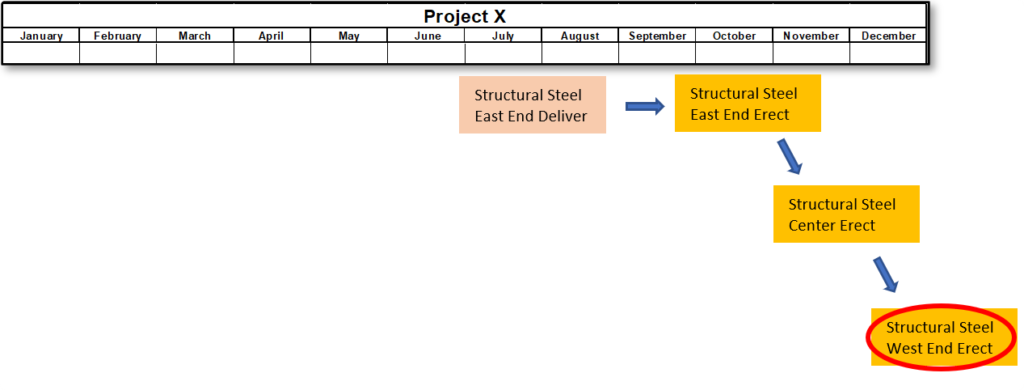
Figure 3: Start With The Erection Sequence And Work Backwards
We continue to work backward from the delivery date to fill in the fabrication and design dates. Along the way, Engineering must provide the design hours and vendor data delivery dates. Similarly, Procurement must provide the delivery times for the structural steel.
And that is the whole point of the Integrated Planning Session, isn’t it? So that the project lifecycle team can create a credible, agreed-on Path of Construction.
The project team can now easily fill in the remaining dates for the two remaining sections.
What do we get out of all this? The benefits are easy to see from the final timeline in Fig. 4 below.
Firstly, we see the need to prioritize the East-End structural steel design first. In addition, the design stage must start by February at the latest.
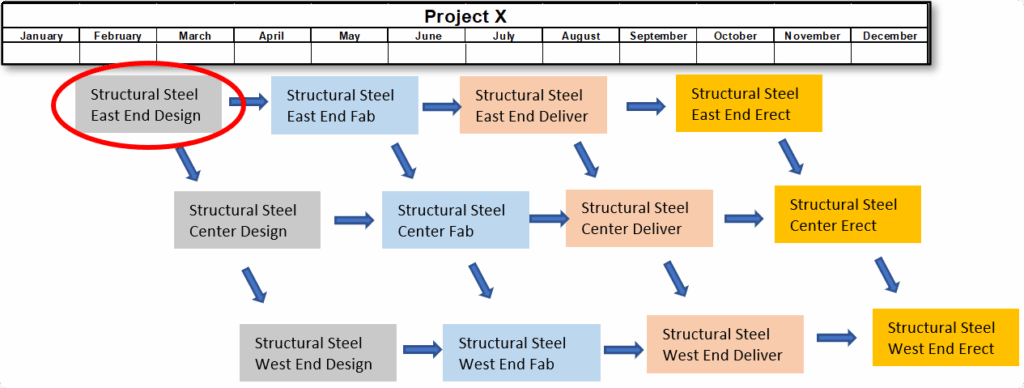
Figure 4: Work Backwards Through Procurement, Fabrication, and Design
So how does all this CPM-scheduling feed into the AWP process?
Well, for one, we now have a basis to create the deliverables for our AWP implementation. Let’s have a look at Fig. 5 below.
The Construction Work Packages (CWP), spanning from Design to Procurement, are established by the start of the East-End structural steel design. Then within the CWP are the Engineering Work Packages (EWP), a deliverable coming out of engineering design. The EWP feeds into fabrication and eventually the Installation Work Packages (IWP). The CWP become contractual packages that feed contractual information into IWP. The IWP also serves as installation guidelines or the better known as work face planning.
While work face planning tends to be the Contractor’s strong suit, the AWP process emphasizes detailed early planning from the beginning.
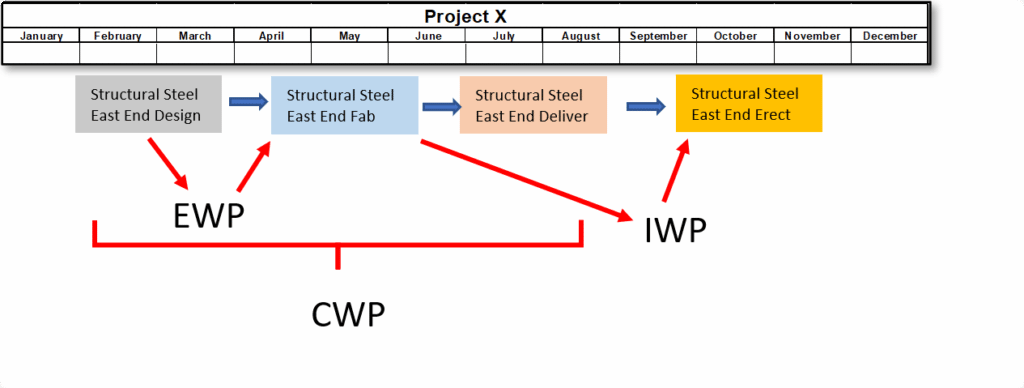
Figure 5: Work Package Intersections and Dependencies
The sequencing process above, once complete, is then used as a basis to sequence engineering and architectural design.
The ultimate gain here is that the project team can sequentially release error-free early work packages.
AWP Implementation Checklist #2: Highly Collaborative Team
We have learned so far that good CPM practice precedes effective AWP implementation. But having CPM-scheduling maturity alone is not enough.
Chris states that “embracing AWP also takes a fully collaborative planning and scheduling effort”. It is not difficult to see why. In both examples, all project lifecycle teams were actively involved, from Engineering to Construction. There was effective communication between each project lifecycle team.
Imagine how hard it would be to develop a Path of Construction in isolation from other disciplines.
Engineering might take a stab in the dark on which section of the structural steel to design first. Or worse yet, attempt to design all sections at once. Thus increasing the risk of their resources (design engineers) bottlenecking during critical periods. Procurement finds themselves fait accompli, shipping out whichever section of structural steel is completed first.
But the real disaster happens during the construction stage. The Installation team finds themselves in a bind, unable to erect to the optimal sequence. Some parts have yet to arrive, so whole sections cannot be erected according to the plan. Whereas parts that are only required later on in the construction stage have arrived too early on site.
No matter how skilled the Project Scheduler is, they cannot develop a credible Path of Construction without other disciplines’ input.
Fig. 6 below provides an example of the information required from each discipline. The project team uses this combined data to collectively develop the Path of Construction.
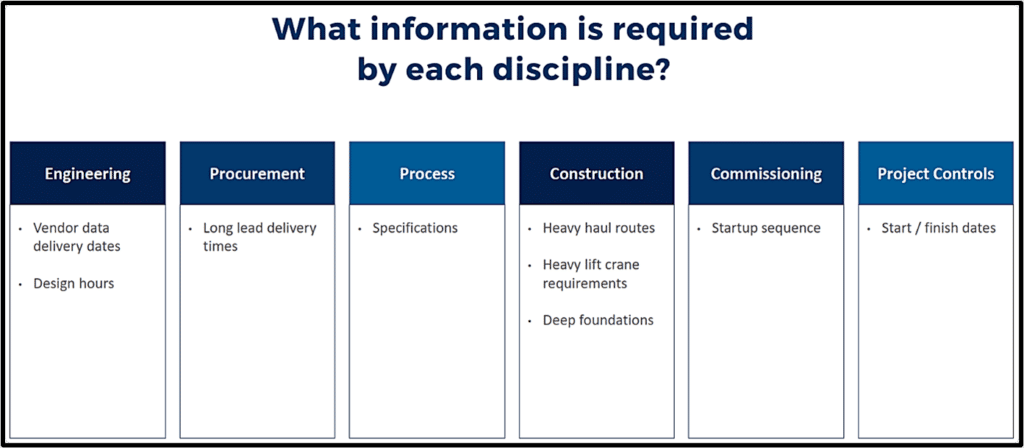
Figure 6: The Information Required By Each Discipline From: “AWP Education Framework,” CII.
Summarizing The AWP Implementation Checklist
Believe it or not, these are the only two items on our checklist for effective AWP Implementation:
- Having a CPM-scheduling maturity
- Having a highly collaborative team
“That’s all? What about management approval, contractual support, training, and software?”
Definitely, but in our opinion, the two items in our checklist are the most important for effective AWP implementation. Furthermore, if your organization has a project controls team, these are the two items most within your reach. Or at least, they should be.
But don’t let the checklist’s simplicity mislead you.
As Chris mentions, his organization made a significant effort to acquire CPM-scheduling talents. They had to restructure and clean up their CPM processes to produce useful outputs. All that upfront effort gave them a head start on the AWP maturity path. They were able to bypass process roadblocks that would have hindered less-CPM-inclined organizations.
If you already have an army of well-trained CPM practitioners, great! But this accomplishment alone can not guarantee effective AWP implementation. Ever heard the saying, “collaboration makes the dream work”? Doesn’t rhyme? OK, I replaced ‘teamwork’ with ‘collaboration’ but you get my point.
You see, CPM-scheduling (and by extension the path of Construction)is central to the AWP philosophy. Developing the Path of Construction requires a collaborative effort between all project lifecycle teams.
One of the greatest joys as a project Scheduler is being able to facilitate lively and interactive sessions. You see participants debate with earnest intent and a single-minded agenda to complete the project within its objectives. That’s when you truly know your organization is on the right path to AWP implementation from a collaboration standpoint.
Our Earnest Attempt In AWP Implementation
At the beginning of the article, I promised to let you know how our AWP implementation went.
I started by calling for an integrated planning session between all project lifecycle teams.It didn’t go perfectly, of course.
Some participants could not make it to the session due to short notice.I apparently bought colored non-sticky notes (seriously, who sells those). Then I found out that the real sticky notes wouldn’t stick on the glass panels (they make it seem so easy).But we improvised and fixed the issue with some acrylic tape and a good ol’ whiteboard.
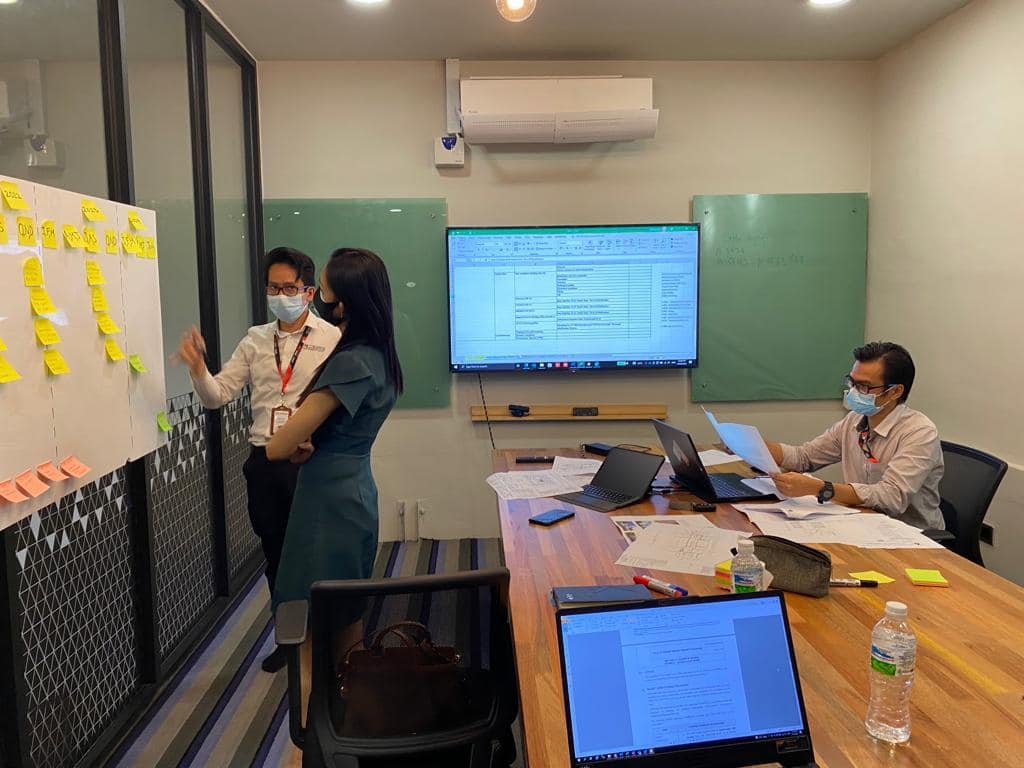
Figure 7: The Author In An Integrated Planning Session To Kickstart the AWP Implementation Process
The project in question was a power import for a large plant complex. Its project delivery type, EPCC (Engineering, Procurement, Construction, Commissioning), made it a prime candidate for AWP implementation.
We first put up sticky notes of theOwner’s turnaround schedule to constrain our substation tie-ins. Then we navigated to the Bill of Quantities and had the client identify the long-lead-time equipment, such as the transformers, switchgear, and capacitor banks. From there, we performed a backward pass on the ground slabs supporting each long-lead-time equipment.
Just like that, we had an agreed-on timeline to further drill into as each discipline provided more information. More importantly, we had set the stage for future collaborative sessions. More than just checking off a contractual requirement, the client now felt confident executing the project aligned to AWP philosophies.
So, call our AWP attempt anything you want. But I am already one step better than where I was yesterday. As an organization, we are already moving forward in our AWP implementation journey. As a consultant, we have already positioned our clients one step ahead of their competitors.
Of course, along the way, there will be a need to attend formal AWP training.Perhaps even getting a competency-based certification after several successful AWP implementations.But as a trainer, I find students benefit more from training if they get their hands dirty on the subject first. That way, they know what they don’t know. And that becomes an opportunity to find out during the formal training.
Final Words On AWP Implementation
So that concludes our second article of the AWP series of blog posts in conjunction with Chris Carson’s AWP presentation. Don’t forget to let us know in the comments below how your AWP implementation is going.
And finally, we cannot guarantee your organization will have a smooth AWP journey. But we can certainly give you a heads-up about lessons learned from previous AWP implementations. See you there in our next article of the AWP series!
References:
- Mutang Tagal, Bian. “The Top 6 Advanced Work Packaging Benefits That You May Not Have Heard About“.Project Control Academy, 08Mar 2022.
- Carson, Chris. “How You Can Efficiently Evolve From Project Scheduling To Implementing Advanced Work Packaging (AWP) With Ease”. Project Control Academy, 26 Mar 2021.
- “Advanced Work Packaging – Education Framework.”AWP Community For Business Advancement, Construction Industry Institute (CII), Aug. 2020.
- Ghorbani, Shohreh. “Project Controller vs. Good Communicator“.Project Control Academy, 21Sep 2013.
About the Author:

Bian comes from a conventional Planning & Scheduling background and is also a trainer with technical capabilities in 4D BIM Planning and Advanced Drone Photogrammetry. He is currently consulting for several key infrastructure projects such as the Pan Borneo Highway project in Sarawak under PCSS Consultancy Sdn Bhd and has worked in the oil & gas industry developing maintenance schedules for a major oil and gas operator.
He holds a Bachelor of Science (BSc.) in Petroleum Engineering from The University of Texas at Austin. Bian was an invited speaker for The Institution of Engineering and Technology (IET) Evening Talk 2020.





![[Free 90-min Masterclass] The Ultimate Leadership Recipe for Project Professionals](https://www.projectcontrolacademy.com/wp-content/uploads/2024/08/4-1024x576.jpg)















